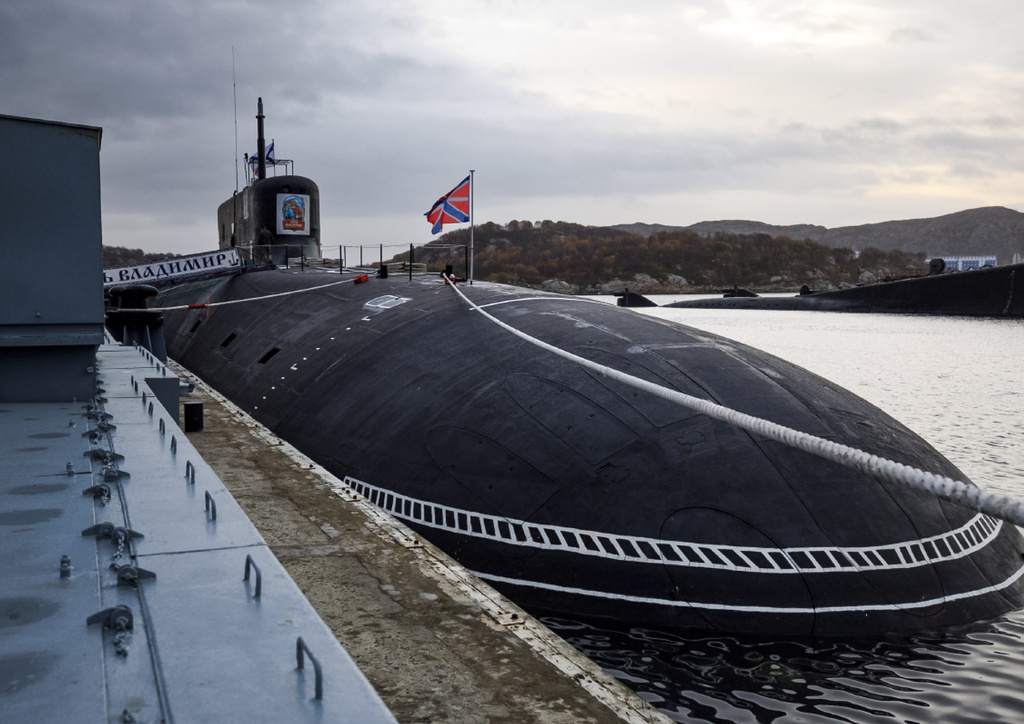Russia has begun planning nuclear-powered submarines to export liquefied natural gas (LNG) from the Arctic to Asia in a bid to reduce travel time via the Northern Sea Route (NSR), a senior state official said.
Russia already uses nuclear-powered icebreakers capable of breaking up the Arctic ice to pave the way for such transport through the Northern Sea Route, which runs along Russia’s Arctic coast from Murmansk in the west to the Bering Strait. to the east, a route Moscow sees as a faster alternative to the Suez Canal and plans to develop.
But Russia is suffering from a shortage of ships that can break through the thick Arctic ice, a hurdle for the new Arctic LNG 2 project, which is subject to sanctions from the United States over the war in Ukraine.
The Arctic LNG 2 unit started producing seaborne liquefied natural gas last December. But although the first shipments of the supercooled gas were shipped in early August, it has yet to be passed on to end buyers.
Mikhail Kovalchuk, a close associate of President Vladimir Putin and director of the Kurchatov Institute, a pioneering nuclear research center, presented the project at an industry conference in St. Petersburg last week, according to the event’s official website.
New class of ships
“It is about the creation of a fundamentally new class of ships, capable of being an alternative to the “traditional” natural gas carriers, which in Arctic conditions are not able to sail all year round without icebreakers,” states the website Offshore Marintec Russia 2024.
The website cites Kovalchuk who held talks in the Kremlin with Putin on September 24 and told the conference: “The construction of submarine nuclear-powered natural gas carriers has been discussed for a long time, since the early 2000s. Now we (the Institute Kurchatov) and Gazprom have started planning such a project, and this project will go ahead.”
RBC media reports that the idea is to reduce the time required for navigation from 20 to 12 days and that the submarines will be able to carry around 180,000 tons of LNG, on par with a conventional ice-class natural gas carrier. Arc 7.
The planned submarines will be 360 meters long and no more than 70 meters wide, and will be powered by RITM-200 nuclear reactors, which Russia uses to power its newest icebreakers.
Some experts, however, are wary of the feasibility of the submarine plan.
Alexander Nikitin, a former Russian Navy officer who is a nuclear expert at the Vilnius-based Bellona Center for Environmental Transparency, said Russia does not have the capabilities to build such a submarine.
And additional service vessels and docks as well as specially trained crews would also be needed, he said.
“My opinion is that people are thinking and saying ‘maybe it will work.’ But given the situation, it’s unlikely,” he said, calling the plan a “bluff”
!function(f,b,e,v,n,t,s)
{if(f.fbq)return;n=f.fbq=function(){n.callMethod?
n.callMethod.apply(n,arguments):n.queue.push(arguments)};
if(!f._fbq)f._fbq=n;n.push=n;n.loaded=!0;n.version=’2.0′;
n.queue=[];t=b.createElement(e);t.async=!0;
t.src=v;s=b.getElementsByTagName(e)[0];
s.parentNode.insertBefore(t,s)}(window, document,’script’,
‘
fbq(‘init’, ‘726515947549353’);
fbq(‘track’, ‘PageView’);
#Russia #planning #nuclearpowered #submarines #transport #natural #gas #Arctic


